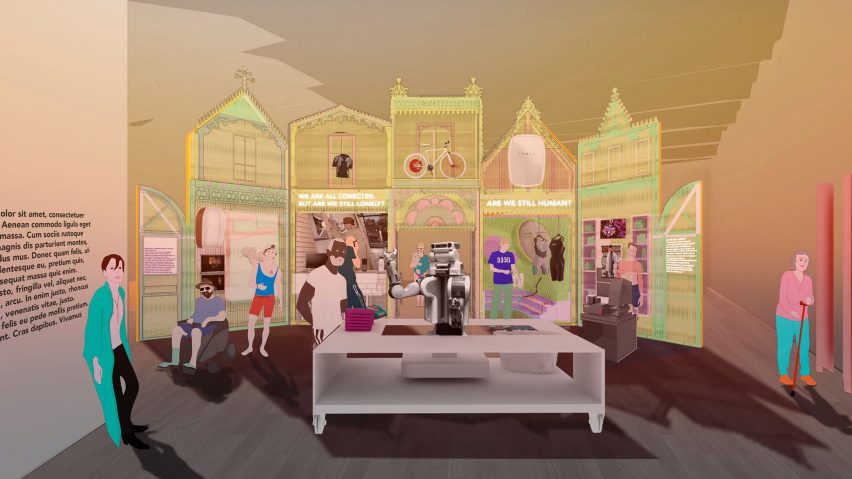
10 designs that predict the future, selected by curators of the V&A's The Future Starts Here
Ahead of new V&A exhibition The Future Starts Here, the curators pick 10 objects in the show that can help us predict what's in store in years to come.
The 10 designs make up a handful of the 100 objects included in The Future Starts Here, which will open at London's V&A museum on 12 May 2018.
The exhibition marks the first time the influential institution has turned its attention to exploring the topic of the future.
The minds behind the exhibition are Rory Hyde, the V&A's curator of contemporary architecture and urbanism, and Mariana Pestana, an independent curator, architect and co-founder of design studio The Decorators. The two readily admit the future is impossible to foresee with any precision, even for two people who have given it months of thought.
Instead, their exhibition focuses on objects that suggest future technological frontiers, ways of living and public debates, some of them contradictory. The curators found guidance in a quote by cultural theorist Paul Virilio: "The invention of the ship was also the invention of the shipwreck."
"It means with each new invention, with each technology, with each design idea, comes contained within it good futures and bad futures," Hyde told Dezeen. "That's why we have the title The Future Starts Here — we're looking at beginnings."
Here are the 10 designs selected by Hyde and Pestana as harbingers of things to come:
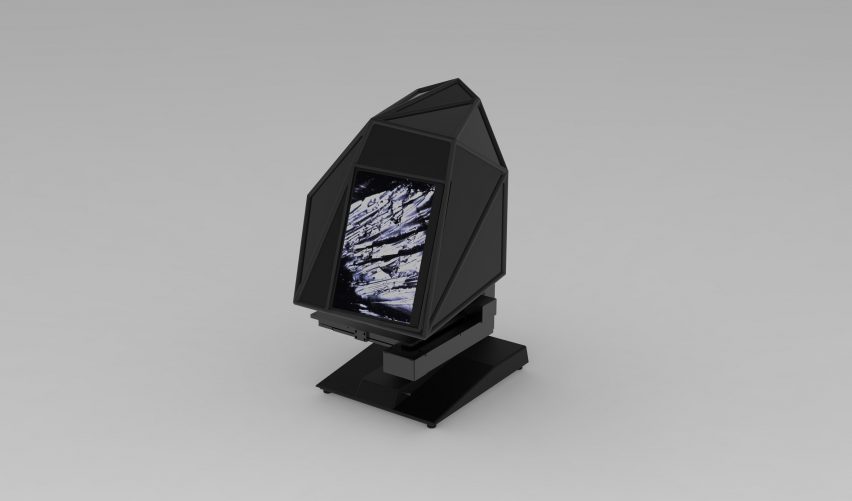
nVisible Virtual Reality by Nanotronics
The Future Starts Here exhibition is structured around several questions. The first object on Pestana and Hyde's list — a Nanotronics microscope and accompanying visualisation — speaks to the first of these: "What makes us human?"
"To build the future you have to see it, and Nanotronics do these incredible VR experiences of very small visualisations," said Pestana. "The nano field of the body — with DNA sequencing for example — is a new field of design. It's very radical. This is where a lot of experiments are happening."
Visitors to the exhibition will be able to don a VR headset to walk over various nanosized samples. "You'll be able to navigate a set of samples of a human cell, a strand of hair, a vegetable cell," continued Pestana. "It's almost like a Google map, but a beautiful one, like a video game that takes you through the inside of your body."
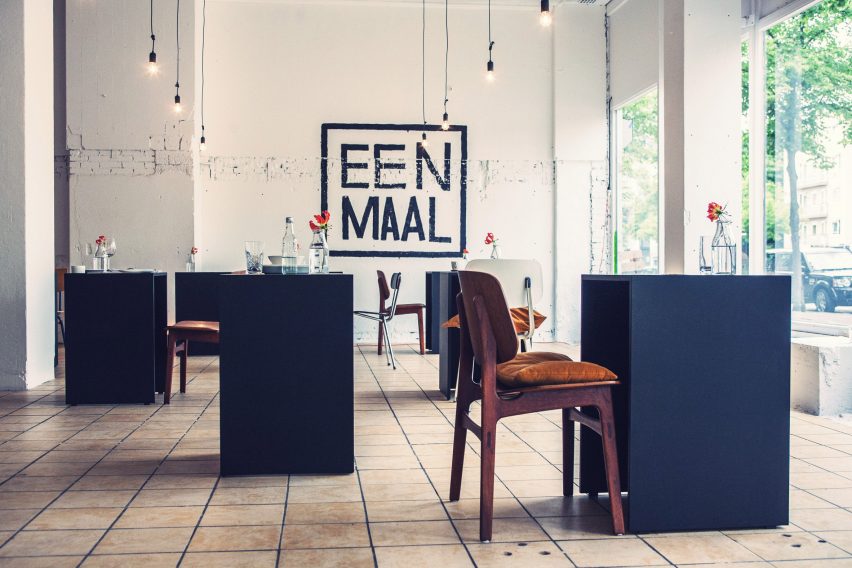
Eenmaal restaurant by Marina van Goor
Not all of the designs shaping the future are high-tech. Eenmaal is a restaurant concept created by Dutch designer Marina van Goor, with tables only big enough to accommodate one person at a time. The exhibition will host a mini version of this restaurant, to explore the question: "We are all connected, but are we still lonely?"
"It's designed to break this taboo of eating alone in public," said Hyde. "Almost 30 per cent of households in the UK are people who live alone, but there's some sort of social limit on eating alone in public, so by creating a restaurant of only solo tables you can break that."
"It's not just a technology exhibition; it's a future exhibition," he continued. "We're looking at these broader trends in demographics and politics as well as technology. We would call this restaurant a social technology in the sense that it's a kind of space and construct that allows a different kind of activity to take place."

People's Parliament of Rojava by Jonas Staal
Another of the exhibition's key questions is: "Does democracy still work?"
"When we first wrote this down maybe 18 months ago, it seemed like a silly provocation, but with what we now know about Brexit and Trump, it's become a serious question!" said Hyde.
To that end, Hyde and Pestana are showing a model of Dutch artist Jonas Staal's People's Parliament of Rojava. Staal's organisation New World Summit is currently building the structure in the north of Syria for the Democratic Self-Administration of Rojava, a Kurdish region that declared itself autonomous in 2012.
"This is a group of Kurdish people who believe that in the future, democracy will thrive but the nation state won't," said Pestana. "So they are practising on the ground a democracy without a state. It's a very progressive democracy with 50-50 female-male representation that defends values like ecology, self-defence, no militarisation without purpose, and so on. It's an interesting case study."
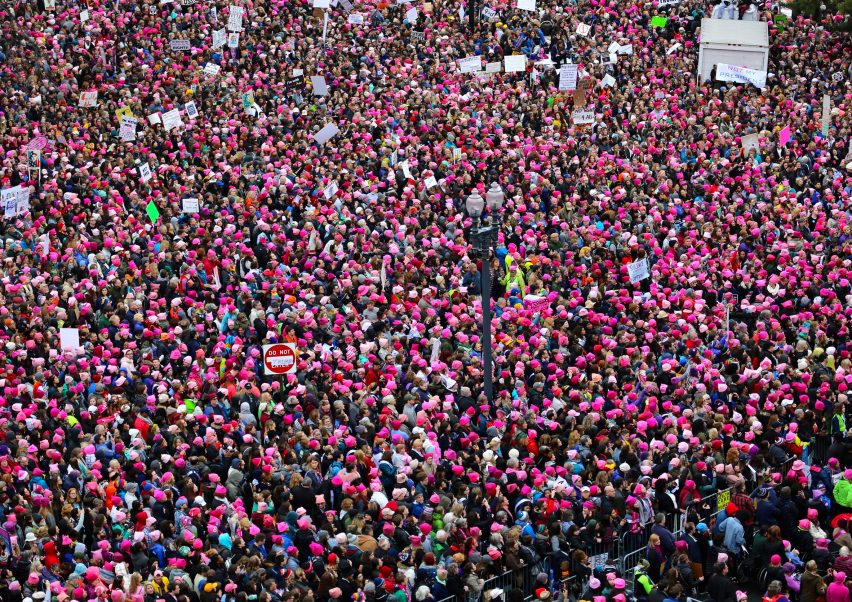
The Pussyhat by Kat Coyle, Jayna Zweiman and Krista Suh
Alongside new forms of democratic government, The Future Starts Here will look at objects of protest. As an example, Pestana and Hyde single out the Pussyhat — an object made iconic by political demonstrators in 2017 and acquired by the V&A weeks later as part of its Rapid Response Collecting programme.
The curators chose the design for this list because of the protest movements it represents and because of the method by which it was disseminated. The Pussyhat Project made a simple knitting pattern available online for anyone to replicate.
"The hat is a kind of social technology," said Pestana. "Each person knitted a hat and then they wore it, most famously at the Women's March on Washington to protest the inauguration of President Donald Trump. Each person individually made a hat, but collectively they became a crowd, they made a sea of pink. That's a very powerful thing that design can do — to allow people to exist as a group."
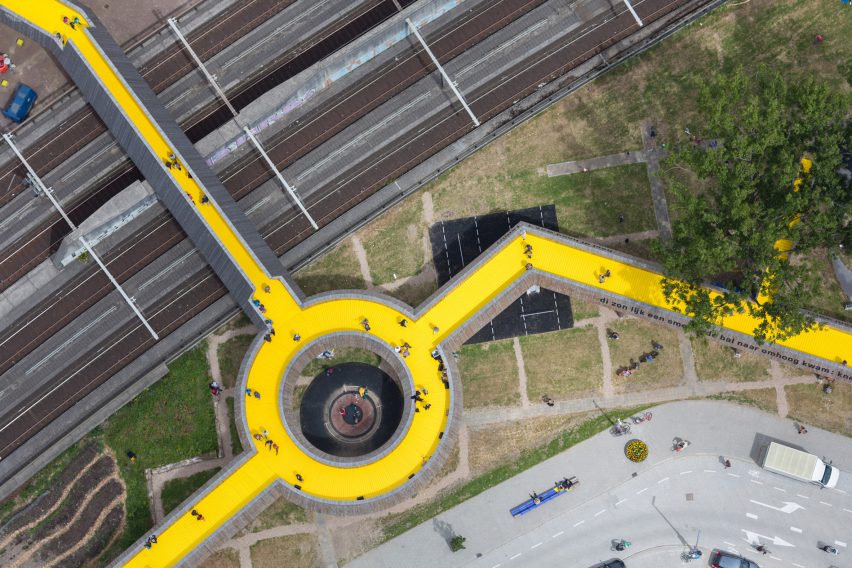
Luchtsingel crowdfunded footbridge by ZUS
A major consideration for anyone thinking about the future is what will the world around us look like. Hyde and Pestana are more interested in exploring the connected question of who will be responsible for making those decisions. They'll explore urban design, architecture and new models of city-building under the banner: Are cities for everyone?.
Their example is Dutch studio ZUS's Luchtsingel footbridge, which was crowdfunded by the citizens of Rotterdam in 2012 and completed in 2015. A model of it will be displayed in the exhibition.
"For us this project opens up lots of interesting questions about the role of the state in building the city," said Hyde.
"Some people find it a slippery project that might open the way to the state retreating from building for the public, but the architects talk about it as a literal bridge between the disconnected bureaucracies of the city. It links three different councils. It's in a kind of no man's land where nobody was really taking responsibility for it, and it's created loads of new opportunities for businesses and public spaces."

Big Glass Microphone by Stamen
The topic of data collection and privacy could not go unaddressed in an exhibition focused on our future, and Hyde and Pestana are doing so under the guise of a cheeky question: Is Edward Snowden a hero or a traitor?
"For us it gets at the heart of the struggle over the internet at the moment," said Hyde. "The Facebook and Cambridge Analytica issue is exactly over this point. Who owns our data, how is it being used, how is it being used against us and what agency do we have in that process?"
The curators give the example of Big Glass Microphone, a work they've commissioned from San Francisco-based data visualisation firm Stamen. It analyses the microvibrations within the "incidental infrastructure" of an existing fibre optic cable under the streets of Stanford in California. Using this information, a real-time map of the movements of people and vehicles within the city was created.
"We should be at once excited and concerned about this," said Hyde. "It's about who has control of these systems. What Snowden showed is that tech companies were feeding users' information to governments without users' knowledge.
"What stamen are pointing out is that the next frontier over who owns this data will be played out in cities, and it will be played out in the physical world as much as in the digital one.
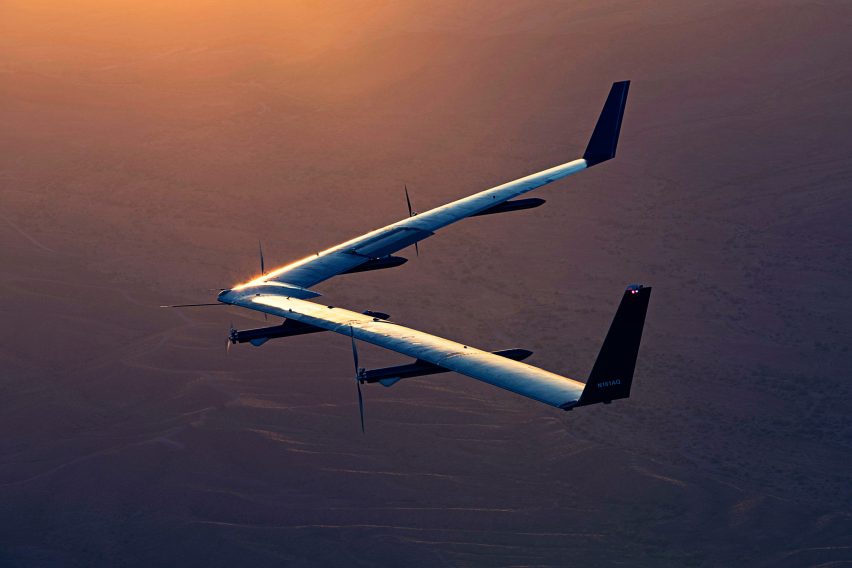
Facebook's Aquila drone
Should the planet be a design project? The Future Starts Here suggests we are increasingly seeing it as such, particularly as we look to exploit previously inaccessible or unclaimed areas of it.
That's where the biggest object in the exhibition comes in – Facebook's Aquila internet-providing drone. The real item, complete with 40-metre wingspan, will hang in a V&A gallery. The solar-powered, ultralight unmanned aircraft is able to bring connectivity to unconnected areas of the world.
"What's interesting about this project is it inverts what we think of as infrastructure," said Pestana. "Infrastructure's no longer something that happens under the ground, where we cannot see it, but in the atmosphere, where we also cannot see it. The atmosphere is a new site of design."
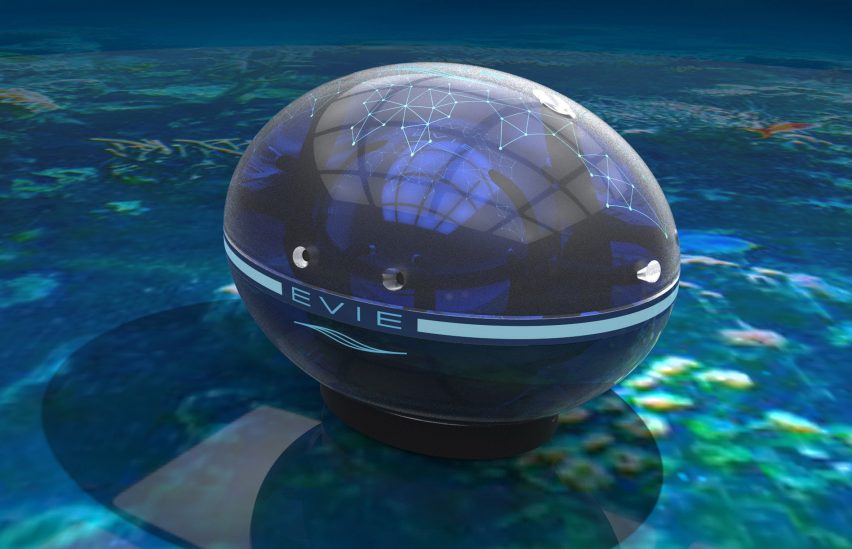
Eve drone by Hydroswarm
A section of the exhibition will also explore geoengineering and how design is being used to counter the effects of global warming.
"Here's where we deal with climate change, the fact that we are living in a time of deep ecological mutation, and we humans are responsible for many of the transformations that are now occurring in terms of climate change," said Pestana.
"If we've designed climate change, can we design our way out of it?"
Sometimes, just information-gathering in this field has the potential for revolutionary change. Pestana and Hyde point to the Eve drones by start-up Hydroswarm, which was founded by MIT researcher Sampriti Bhattacharyya in 2015. She designed the drones to work together to map the world's oceans — only five per cent of which have previously been explored. A prototype will be displayed during the exhibition.
"The Hydroswarm is an unmanned robot that explores a lesser-known part of the globe," said Pestana. "It rolls and finds its way around the oceans."
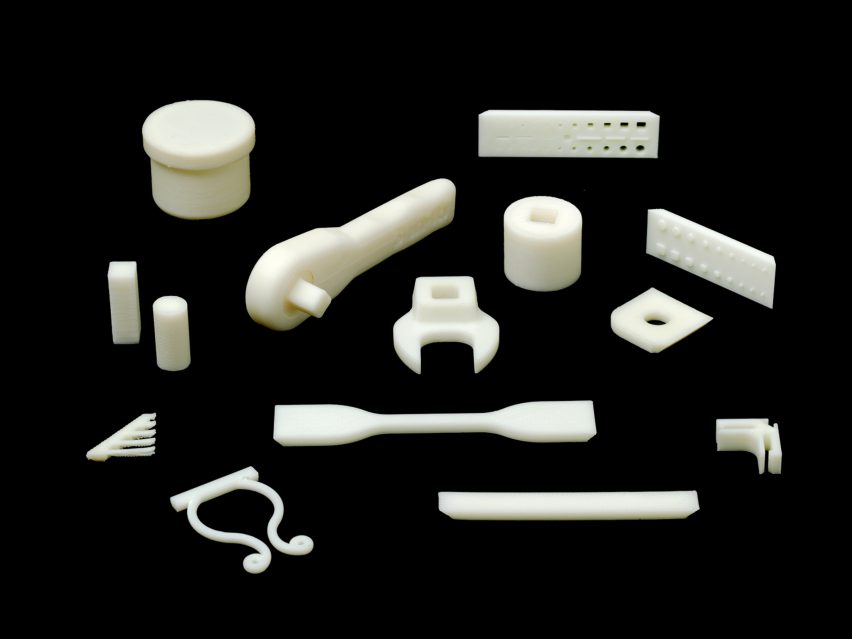
AMF 3D printer by Made in Space
Space is the new frontier for design. An invention that captures the possibilities of this field is a 3D printer designed to work in zero-gravity by US start-up Made in Space. It is currently in use at the International Space Station, but the company envisages a time when a wider variety of manufacturing will take place in space.
"This is a 3D printer that astronauts can use to print any tools that they might have forgotten, wrenches and things like that," said Pestana. "But really what the project proposes is that factories could be located in the atmosphere, no longer on the surface of the earth."
Objects manufactured on the machine will be displayed in a section titled If Mars is the answer, what is the question?
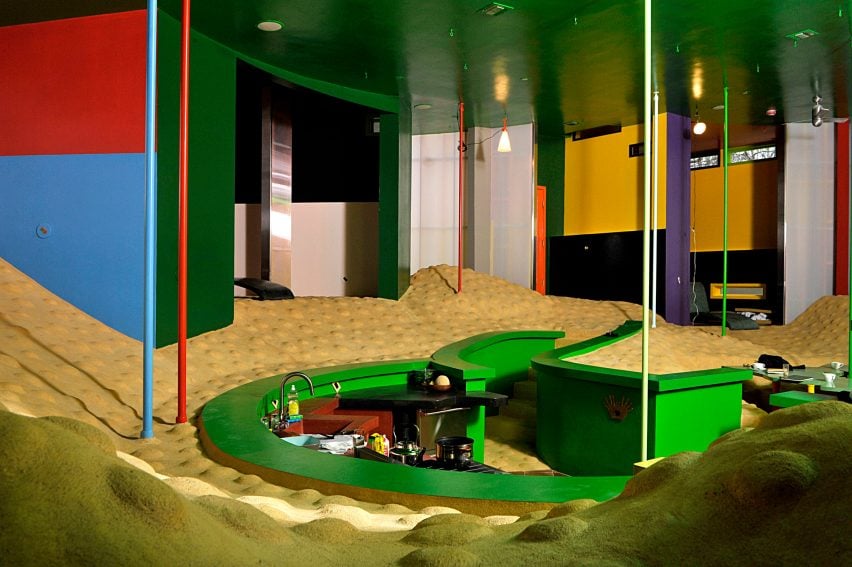
Bioscleave House by Arakawa and Gins
Potentially life-extending technologies are a major trend that The Future Starts Here covers in a section titled: Who wants to live forever?
Hyde and Pestana are keen to point out that there is more to this field than cryonics and other uber-futuristic ideas for conquering death. Some projects are positively lo-fi, like the Bioscleave House by Japanese architect Shusaku Arakawa and American writer Madeline Gins. The pair devised a philosophy of architecture against death, and Hyde describes this house — a model of which is included in the exhibition — as one of the best examples of what they were trying to do.
"It's got a sloping floor that is covered in these lumps, it's got poles to swing from, some of the doors are circular and you need to climb through," said Hyde. "It's a house that presents a physical challenge to its inhabitants. The idea is grounded in real research about keeping the immune system active and keeping the body in a constant physical state, which can then extend your life."
Visualisation is by Andrés Jaque/Office for Political Innovation.